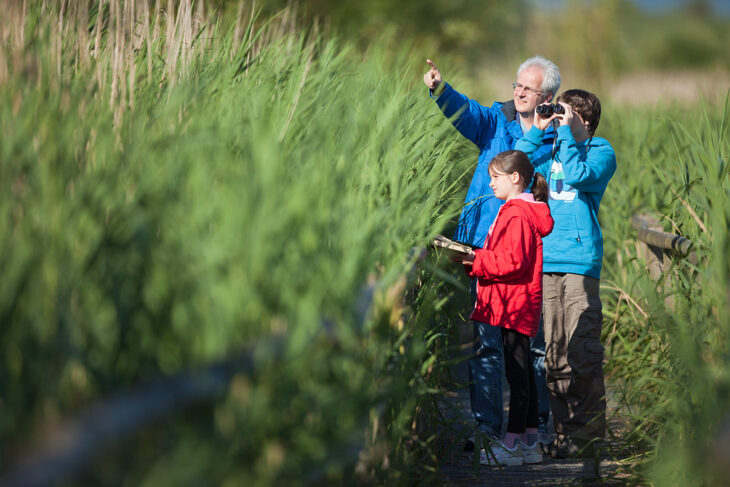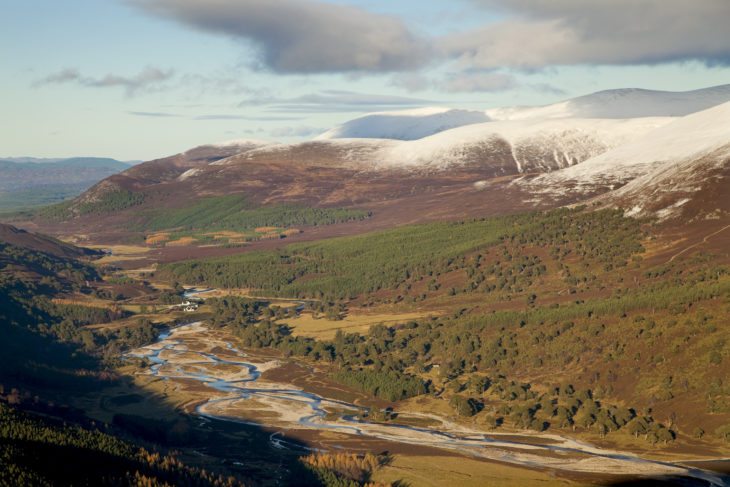A new route map towards unlocking £1 billion of new investment for nature conservation in Scotland has been published by the Scottish Wildlife Trust and the Scottish Environment Protection Agency (SEPA).

This work comes at a critical time, as society plans a green recovery from the social and economic upheaval caused by Covid-19, and continues to respond to the urgent climate and ecological emergencies.
The route map was been developed in collaboration with a broad coalition of stakeholders and experts over a period of two years. It highlights nine tangible opportunities for investment that would contribute to a green recovery, as well as significant benefits for nature, people’s health and wellbeing, and the nation’s economy. Crucially, the route map also includes models which aim to stimulate investment in Scotland’s natural capital by delivering a financial return to investors.
Attracting new investment into nature through innovative approaches to tried and tested mechanisms would help Scotland to meet its commitment to the Sustainable Development Goals, and bridge a gap between the resources needed to tackle urgent challenges facing nature and the funding available from traditional sources.
Read the full Route Map to £1 Billion (pdf)
Terry A’Hearn, Chief Executive of the Scottish Environment Protection Agency said: “The global pandemic has drawn into sharp focus the connection between social, environmental and economic prosperity. We’re already seeing communities and companies rising to the challenge – from innovation like manufacturers switching production to health equipment to investors looking towards more sustainable business models.
“As we start to focus on recovery we must recognise the opportunity for that to be more inclusive and more sustainable.”
Terry A’Hearn
“As we start to focus on recovery we must recognise the opportunity for that to be more inclusive and more sustainable. The £1 Billion Challenge provides a real opportunity to bring together real-world projects that spark regeneration of communities, build green businesses and create new jobs, with investors that understand that a successful, resilient economy depends not just on achieving financial returns – but on creating social and environmental value and success.
“Scotland needs a globally competitive, entrepreneurial, inclusive and sustainable economy. At SEPA our One Planet Prosperity strategy will mean we can regulate in a radically new way – helping businesses bring commercial and environmental success together as the joint engine rooms of economic and social prosperity. SEPA is proud to be working with the Scottish Wildlife Trust and other partners on this innovative and progressive initiative to help support economic recovery, with benefits for Scotland’s people and environment.”

Our Chief Executive Jo Pike said: “We have seen during the pandemic that when human beings put their minds to it, it is possible to mobilise action on an unprecedented scale. The urgent challenges facing nature now require a step change in our response and we need to learn from recent experience. Many people have been reminded of the importance of the natural world during lockdown, and there is growing support for ensuring that the recovery from this crisis helps build a better future instead of returning us to business as usual.
“It is increasingly clear that solving the nature crisis will only be possible if we can develop new and innovative funding mechanisms that help us take solutions to scale.”
Jo Pike
“It is increasingly clear that solving the nature crisis will only be possible if we can develop new and innovative funding mechanisms that help us take solutions to scale. Our route map aims to identify ways to generate greater investment in nature conservation, whilst also creating green jobs, more resilient communities and helping to fight climate change. We hope it will stimulate further discussion about how these new models can be at the heart of a green recovery.”
The route map is the culmination of the Scottish Conversation Finance Project’s £1 Billion Challenge. It has been developed with the support of a wide range of private, public and third sector organisations (“Scottish Conservation Finance Pioneers”), including Conservation Capital, Scottish Natural Heritage, Central Scotland Green Network Trust, and many more.
The nine opportunities outlined include a Natural Capital Pioneer Fund, a Marine Fund, and a first-of-its-kind Nature-Climate Bond.
Read the full Route Map to £1 Billion (pdf)

Further quotes regarding the Route Map to £1 Billion
Neil Birnie, Chief Executive, Conservation Capital said: “Conservation Capital has been fortunate to support innovative conservation finance in many parts of the world. We sense that the opportunities for financing nature-based businesses in Scotland are particularly exciting. The Natural Capital Pioneer Fund will focus on existing sectors such as tourism, fisheries, agriculture and forestry. It will also explore emerging areas, such as how technology businesses might support nature.”
Francesca Osowska, Chief Executive, Scottish Natural Heritage, said: “Having played our part to develop the route map, we are looking forward to delivering this important initiative. These plans are critical to bring conservation and business together to combat the climate emergency and reverse biodiversity loss. We look forward to helping make these connections and strengthening both Scotland’s biodiversity and economy. Nature-based solutions are going to be a vital part of green recovery after Covid-19 – and a green recovery is the only way to build a strong, resilient, inclusive, nature-rich and low-carbon economy for our future.”
James Stuart, Convener, Loch Lomond & The Trossachs National Park said: “Climate change and biodiversity loss are existential threats; we must respond and act now. We have the right ingredients, but we must develop a new recipe to wake the sleeping giant of institutional investment. This challenge will do just that.”
Hamish Trench, Chief Executive, Scottish Land Commission said: “The impacts of Covid-19 have fallen very unevenly across society. Already, Scotland’s most disadvantaged communities are living with the impacts of previous economic change that left vacant and derelict sites causing social, economic and environmental harm. Investing now to realise the potential of these sites will help shape an economic recovery that is inclusive as well as green.”
Louise Wilson, Co-founder and Joint Managing Director, Abundance Investment said: “This initiative couldn’t come at a more important time. The finance industry is finally waking up to the need to think about how money is invested and the impact it has on the future of society. But, it is not yet thinking about how to solve the challenge of directing capital to the nature-based solutions we so desperately need for a more resilient future when the economic returns are often indirect. This report provides inspiration on what can be done when we think about the problem holistically and work collaboratively between the finance and conservation sectors.”
